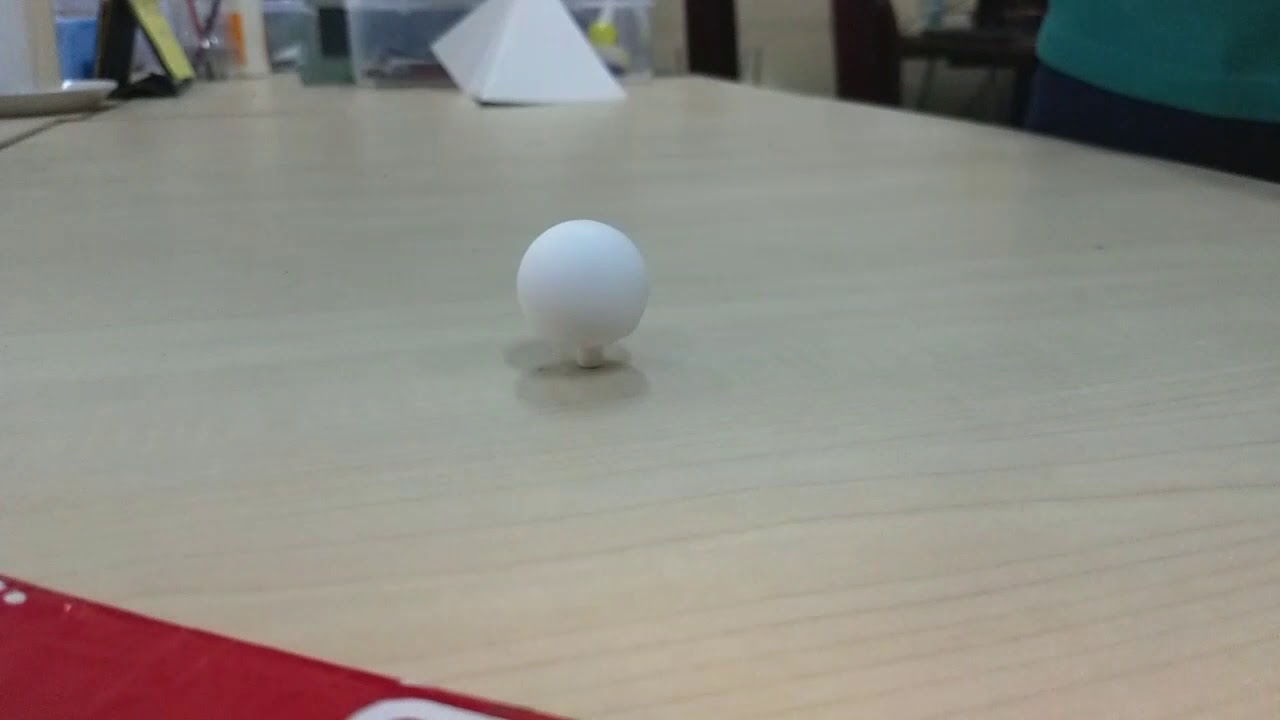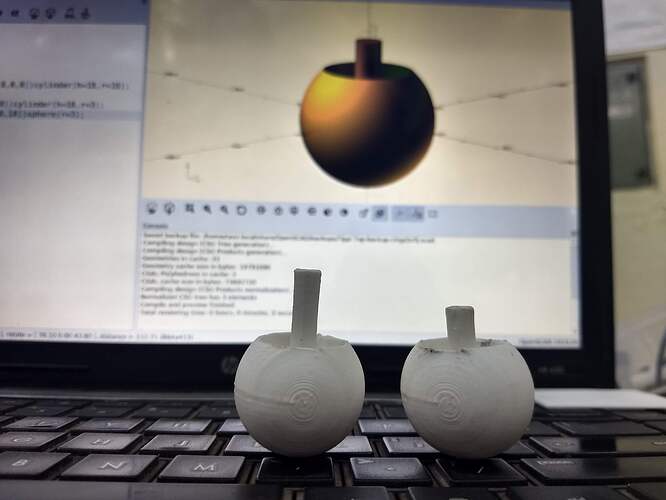Hi
Today I and Jude(@jtd) had a great time tinkering with Tippe Top. This counter-intuitive toy mesmerizes everyone! The detailed physics of working of the toy is indeed a complex one and I would be happy if someone takes up the challenge to explain it in a clear and lucid way.
Meanwhile, we decided to change some of the parameters and design of the toy to see if there is any change in the overall time of spinning after tipping.
For instance, we decided to make the tail round to see if that will make any difference in the duration of inverted spinning? What do you think?
The parts are designed using open source 3D parametric modeling software - openscad. It’s easier to change the parameters quickly and get precise results.
The timing so far is 9 sec with the following model. (without slow-motion effect ![]() )
)
What are the other ways in which you can make the same top (without using 3D printers)? Let’s see who designs the top which spins the longest!
The slow-mo video:
Here are two models with different stem sizes. Which one do you think will take invert and spin for the longest duration?

